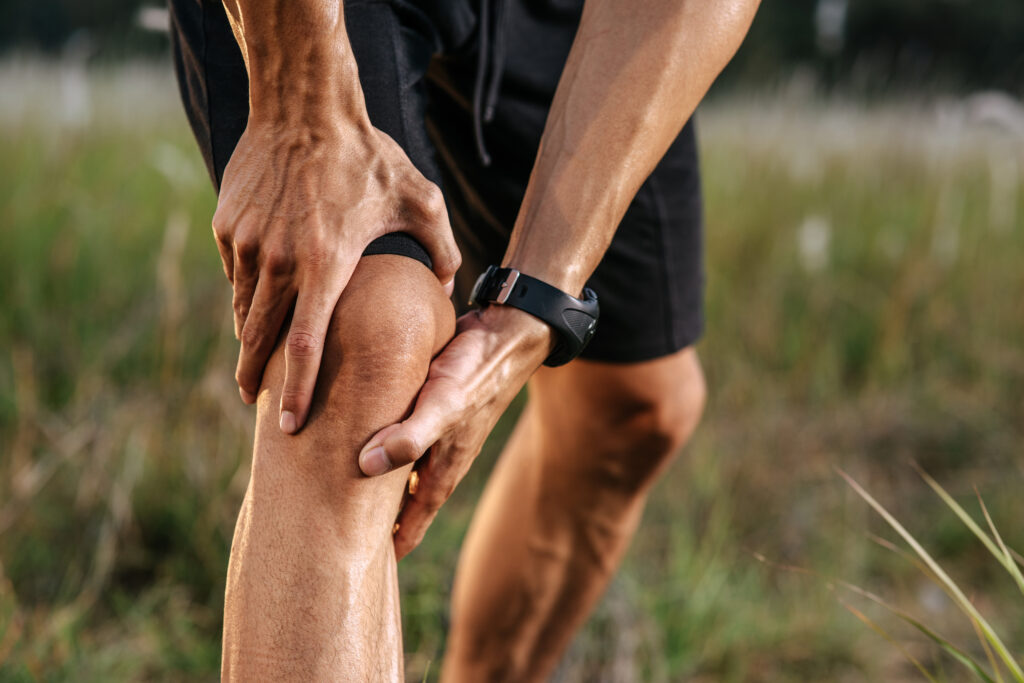If you're dealing with persistent back pain in San Antonio, you know how it can affect your daily life. Fortunately, there are several effective techniques you can explore to find relief. From tailored physical therapy options to the benefits of chiropractic care, these strategies can help you regain your comfort and mobility. You might also be surprised to learn how simple lifestyle adjustments can make a significant impact. Let's take a closer look at these techniques and discover which ones might work best for you.
Physical Therapy Options
When it comes to alleviating back pain, exploring physical therapy options can offer significant relief and restore your mobility. You'll find that a tailored physical therapy program focuses on your specific needs and conditions, enabling you to regain strength and flexibility.
First, a physical therapist will conduct a thorough assessment of your posture, movement patterns, and any underlying issues. This initial evaluation helps them design a personalized treatment plan that targets the root cause of your pain.
Exercises like stretching, strengthening, and range-of-motion activities are often included to help improve your overall function.
You might also engage in manual therapy, which involves hands-on techniques to relieve tension and improve circulation. This can be particularly beneficial in reducing muscle tightness and enhancing mobility.
Additionally, modalities such as heat, ice, or electrical stimulation may be utilized to ease discomfort and promote healing.
As you progress through your sessions, your therapist will teach you proper body mechanics and techniques to avoid future injuries. Learning how to lift correctly, sit properly, and maintain good posture can make a significant difference in your daily life.
Moreover, physical therapy often includes education on self-management strategies, empowering you to take control of your recovery.
Chiropractic Care Benefits
Chiropractic care offers numerous benefits for those struggling with back pain, often providing immediate relief and long-term solutions. When you visit a chiropractor, they use hands-on spinal manipulation and other techniques to align your body's musculoskeletal structure. This can help your body heal itself without the need for surgery or medication.
One of the primary benefits is pain reduction. You may experience less discomfort after just one session, as adjustments can relieve pressure on nerves and reduce inflammation.
Additionally, chiropractic care promotes mobility and flexibility. As your spine aligns properly, you'll likely notice improved movement, making daily activities easier and more enjoyable.
Another advantage is the holistic approach chiropractors take. Instead of just focusing on the symptoms, they aim to address the root cause of your back pain. This means they consider factors like posture, lifestyle, and even stress levels, which can all contribute to your discomfort.
By developing a tailored treatment plan, they can help you achieve lasting relief.
Moreover, regular chiropractic visits can enhance your overall well-being. Many patients report improved sleep, better digestion, and increased energy levels after starting chiropractic care.
This holistic improvement can further support your journey towards a pain-free life.
Massage Therapy Techniques
If you're struggling with back pain, massage therapy can offer significant relief.
Techniques like trigger point therapy and myofascial release target specific areas of tension and can help restore your mobility.
Let's explore how these methods work and how they can benefit you.
Trigger Point Therapy
One effective method for alleviating back pain is trigger point therapy, a specialized massage technique that targets tight knots in muscles. You may experience these knots, known as trigger points, in various areas of your back, leading to discomfort and restricted movement. This therapy focuses on applying direct pressure to these points, helping to release tension and improve blood flow.
During a session, a trained therapist will locate these trigger points and use their fingers, knuckles, or elbows to apply firm pressure. You might feel a bit of discomfort, but it's usually manageable. As the therapist works on the area, you'll notice the knots gradually loosening, resulting in reduced pain and increased mobility.
In addition to immediate relief, trigger point therapy can assist with long-term back pain management. By addressing the root causes of tension, this technique helps prevent future flare-ups.
You can also incorporate trigger point self-massage techniques at home using tools like massage balls or foam rollers. Regularly targeting these tight areas will keep your back feeling more relaxed and functional, enhancing your overall well-being.
Myofascial Release Techniques
Building on the principles of trigger point therapy, myofascial release techniques offer another approach to relieving back pain by focusing on the fascia—the connective tissue that surrounds muscles and organs.
When you apply gentle pressure to specific areas, you can help release tension and restore flexibility in the fascia, which often holds onto pain and tightness.
In a typical session, you'll lie down comfortably while a trained therapist uses their hands to locate tight or restricted areas in your fascia. The therapist will then apply sustained pressure, allowing the tissue to elongate and release.
This process can improve blood flow, reduce muscle tension, and enhance your overall mobility.
You can also incorporate self-myofascial release techniques at home using tools like foam rollers or massage balls. By rolling over tight spots, you'll encourage the fascia to release and promote healing.
It's crucial to listen to your body during this process—if something feels too intense, don't hesitate to ease off.
Regularly practicing myofascial release can be a game-changer in managing your back pain, helping you regain comfort and freedom of movement in your daily life.
Yoga and Stretching
If you're struggling with back pain, incorporating yoga and stretching into your routine can make a real difference.
Not only can these practices improve your flexibility, but they also help strengthen your core and alleviate tension.
Let's explore some essential stretching techniques and recommended yoga poses that can bring you relief.
Benefits of Yoga
Yoga offers numerous benefits for back pain relief, making it a powerful tool in your wellness arsenal. By integrating yoga into your routine, you can experience significant improvements in both your physical and mental well-being.
Here are some key advantages you might enjoy:
- Enhanced Flexibility: Regular yoga practice helps increase flexibility in your spine and surrounding muscles, reducing stiffness and improving your range of motion.
- Strengthened Core Muscles: Many yoga poses target your core, which plays an essential role in supporting your spine. A stronger core can lead to better posture and reduced strain on your back.
- Stress Reduction: Yoga encourages relaxation and mindfulness, helping to alleviate stress and tension. Lower stress levels can contribute to decreased pain perception and improve your overall mental health.
Incorporating yoga into your life not only addresses the physical aspects of back pain but also promotes a holistic approach to wellness.
You'll find that with consistency, your body will respond positively to the gentle stretches and poses, ultimately leading to a healthier back and a more balanced lifestyle.
Essential Stretching Techniques
Incorporating essential stretching techniques into your routine can greatly enhance your back pain relief efforts. Stretching helps improve flexibility, increases blood flow, and reduces muscle tension, which are vital for alleviating discomfort in your back.
Begin by focusing on gentle stretches that target your lower back, hips, and hamstrings. A simple seated forward bend can be effective; sit with your legs extended, then slowly reach forward towards your toes. Hold the stretch for 15-30 seconds, breathing deeply to relax your muscles.
Another great option is the cat-cow stretch. Start on all fours, arch your back while inhaling (cat), and then let your belly sink down as you exhale (cow). Repeat this cycle several times to loosen up your spine.
Don't forget about the child's pose. Kneel on the floor, then sit back on your heels and stretch your arms forward on the ground, allowing your back to relax.
Recommended Yoga Poses
Finding relief from back pain can be enhanced through specific yoga poses designed to stretch and strengthen the back. Incorporating these poses into your routine can help alleviate discomfort and improve flexibility.
Here are three recommended poses to get you started:
- Child's Pose: This restorative pose gently stretches your back, hips, and thighs, providing a soothing release.
- Cat-Cow Stretch: Alternating between arching and rounding your back helps to increase spinal flexibility and relieve tension.
- Downward-Facing Dog: This pose elongates the spine and strengthens your back muscles, promoting overall back health.
To practice these poses, find a quiet space where you can focus. Start with Child's Pose, holding it for several breaths to ground yourself.
Then, shift into the Cat-Cow Stretch, moving slowly to feel each vertebra.
Finally, transition into Downward-Facing Dog, ensuring your spine is straight and your heels are reaching toward the floor.
Remember to listen to your body; don't push yourself too hard.
Regular practice can lead to improved posture, reduced pain, and enhanced well-being.
Try incorporating these poses several times a week for the best results!
Acupuncture for Relief
Have you ever wondered how acupuncture can ease your back pain? This ancient practice, rooted in Traditional Chinese Medicine, involves inserting thin needles into specific points on your body. It's thought that these points correspond to energy pathways, or meridians, that can help restore balance and promote healing.
When you visit an acupuncturist, they'll assess your condition and tailor the treatment to your needs. The needles stimulate your body's natural pain-relieving chemicals, like endorphins, providing immediate relief and potentially reducing inflammation. Many people report feeling a sense of relaxation during and after treatment, which can be particularly beneficial if your back pain is stress-related.
Acupuncture can also improve blood circulation to the affected areas, enhancing the healing process. By addressing both the physical and emotional aspects of pain, it offers a thorough approach to back pain relief. You might find that regular sessions not only alleviate your current discomfort but also help prevent future flare-ups.
While results can vary from person to person, many individuals notice significant improvements within a few sessions. It's crucial to choose a qualified acupuncturist who can guide you through the process and track your progress.
If you're open to exploring alternative therapies, acupuncture could be a valuable addition to your pain management plan, helping you reclaim your mobility and quality of life. So why not give it a try? You might just find the relief you've been searching for.
Hot and Cold Treatments
Using hot and cold treatments can provide effective relief for back pain by targeting inflammation and improving blood flow. These methods are simple yet powerful ways to help you manage your discomfort at home.
Here's how you can incorporate them into your routine:
- Hot Packs: Applying heat can relax tense muscles and soothe stiffness. A hot water bottle, heating pad, or warm towel can do the trick.
- Cold Compresses: Cold therapy is great for reducing inflammation and numbing sharp pain. Ice packs or a bag of frozen peas wrapped in a towel can be very effective.
- Alternating Treatments: Switching between hot and cold can maximize relief. Start with heat to relax muscles, then apply cold to reduce swelling.
When using heat, keep it on for about 15-20 minutes, ensuring it's warm but not too hot to avoid burns.
For cold treatments, aim for 10-15 minutes to prevent skin damage. You can repeat these treatments several times a day, depending on your comfort level.
Lifestyle Changes for Prevention
Making simple lifestyle changes can markedly reduce your risk of experiencing back pain. Start by focusing on your posture. Whether you're sitting at a desk or standing in line, maintaining a straight back and relaxed shoulders can prevent strain.
Consider investing in ergonomic furniture that promotes good posture, especially if you spend long hours working.
Next, incorporate regular physical activity into your routine. Engaging in exercises that strengthen your core, such as yoga or Pilates, can provide essential support for your spine. Aim for at least 30 minutes of moderate exercise most days of the week.
If you're unsure where to start, consult with a fitness professional who can tailor a program to your needs.
Don't underestimate the importance of maintaining a healthy weight. Excess weight can put additional stress on your back. A balanced diet rich in fruits, vegetables, lean proteins, and whole grains can support weight management and overall health.
Additionally, pay attention to how you lift heavy objects. Always bend your knees and keep your back straight, using your legs to do the heavy lifting. If something's too heavy, ask for help instead of risking injury.
Finally, prioritize sleep quality. A well-supported mattress and proper sleeping positions can greatly impact your back health.
Make these lifestyle changes a priority, and you'll not only reduce your risk of back pain but also enhance your overall well-being.
Conclusion
Incorporating these seven techniques into your routine can markedly alleviate back pain and improve your overall well-being. Whether you choose physical therapy, chiropractic care, or yoga, each option offers unique benefits tailored to your needs. Don't forget the power of lifestyle changes, like ergonomic furniture and proper lifting techniques, to prevent future issues. By exploring these approaches, you can take control of your back health and enjoy a more active, pain-free life in San Antonio.



